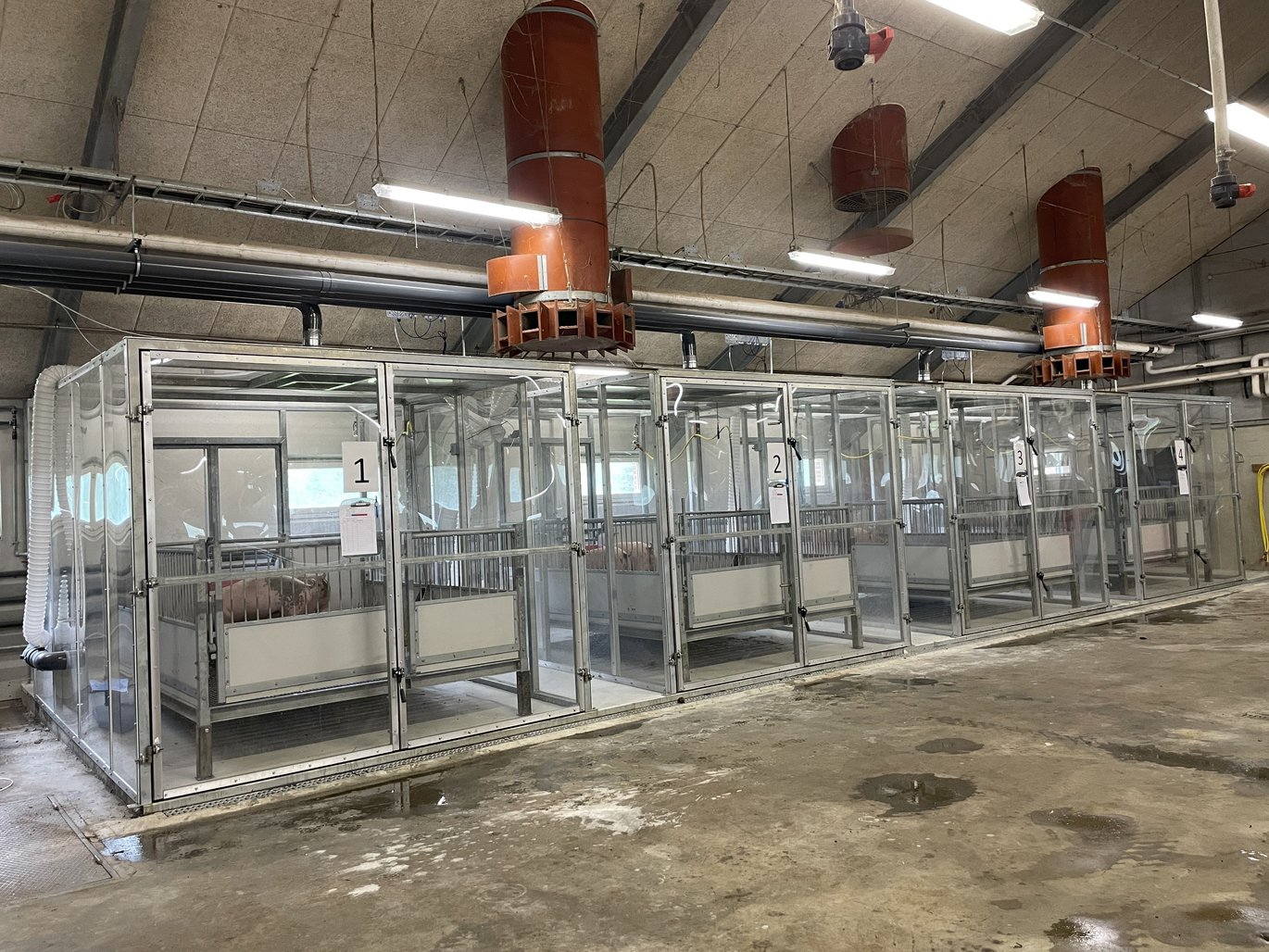New respiration chambers for pigs at AU Viborg
The research facilities at the Department of Animal and Veterinary Sciences have been expanded with new advanced respiration chambers for pigs. This will allow for a wide range of possible research projects in the future – not least in relation to the animals' greenhouse gas emissions and climate impact.

Brand new respiration chambers have been set up and installed in the experimental stables at the Department of Animal and Veterinary Sciences (ANIVET) at Aarhus University in Foulum. The chambers, which make it possible to carry out several different types of research projects, have already been put into use and several projects have been taken in.
"The department has been working with methane emissions from pigs for decades, but in the past methane has just been regarded as a waste of the feed's energy," says head of monogastric research unit Jan V. Nørgaard. Work on climate focus is now resumed at the department. There is a great need to measure the emission of greenhouse gasses from pigs and, to some extent, poultry. This applies to both the animals' direct emission of greenhouse gasses, but also to the emissions that take place via the animals' energy metabolism.
Great need for the new chambers
Jan V. Nørgaard expects that the research in climate impact from animals and ways of limiting this via feeding will be significant over the next decade. For example, the methane production of pigs is expected to increase in the future. This is due to new feed materials become more fibrous, and fibres in feed are converted to methane by intestinal bacteria. "We have already received new projects due to the chambers: In the project "MethEnzwine", we will, with IFF Nutrition and Biosciences, develop an enzyme that reduces methane production from pigs. In another project "Entrance" we will measure methane from pigs fed with green protein," says Jan V. Nørgaard.
PhD student Elvira Sattarova is currently conducting an experiment with slaughter pigs in the respiration chambers: "We have pigs in balance cages in the chambers, so we can compare the feed's digestibility with methane production. But we have also prepared the chambers for farrowing pens, so we can measure methane from sows with or without piglets. The farrowing pen can also be modified, so we can measure group-housed animals," she says.
Facts about pigs and methane
- The pig produces methane in its intestines in the form of farts.
- 6% of the pig's climate footprint comes from farts (approx. 70% of the pig’s climate footprint comes from cultivation/production of feed).
- A quarter of the pig's methane comes from farts. The rest comes from microbial decomposition in the slurry channel in the stable and from the slurry tank.
- Greenhouse gases from pigs account for 35% of agricultural climate emissions.
"Our methane chambers were created on the basis of a grant from GUDP in the project GREENSLURRY, where there was funding to build some simple chambers. ANIVET decided to invest further in the chambers, so we have now built a facility that can cover the research needs of the next many years," Jan V. Nørgaard concludes.
You can watch videos about the new respiration chambers here:
| Supplementary information | |
We strive to ensure that all of our articles comply with Universities Denmark’s principles for good research communication. Therefore, we have supplemented the article with the following information: | |
Funding | Financed via the GUDP project GREENSLURRY and the Department of Animal and Veterinary Sciences (ANIVET), Aarhus University. |
Collaborators | Michael Hansen from AU-BCE (the engineers) has helped with the construction of the chambers. Michael is also project manager in GREENSLURRY. |
More information | Links to videos about the methane chambers: |
Contact | Head of section Jan V. Nørgaard, ANIVET, AU E-mail: janvnoergaard@anis.au.dk Ph.D.-student Elvira Sattarova E-mail: elsa@anis.au.dk |
